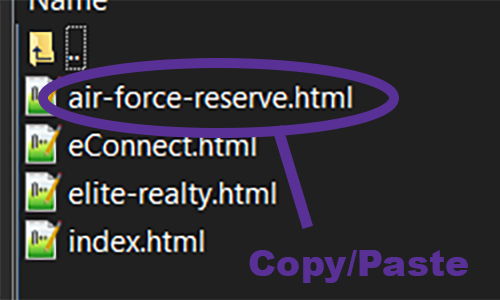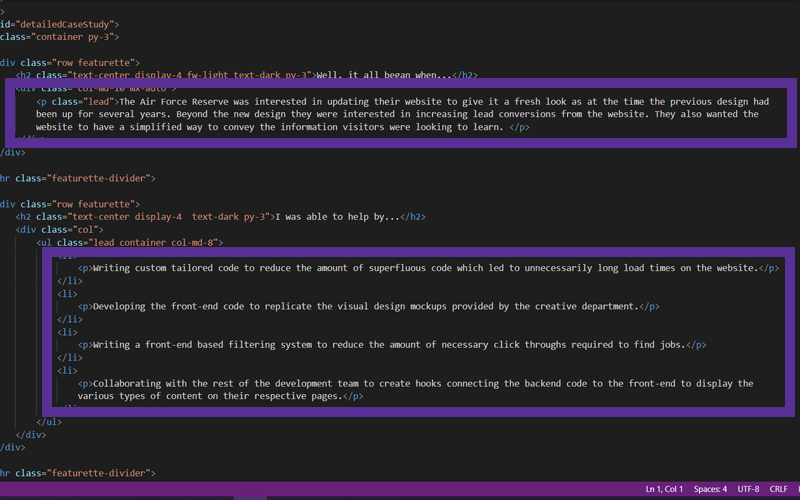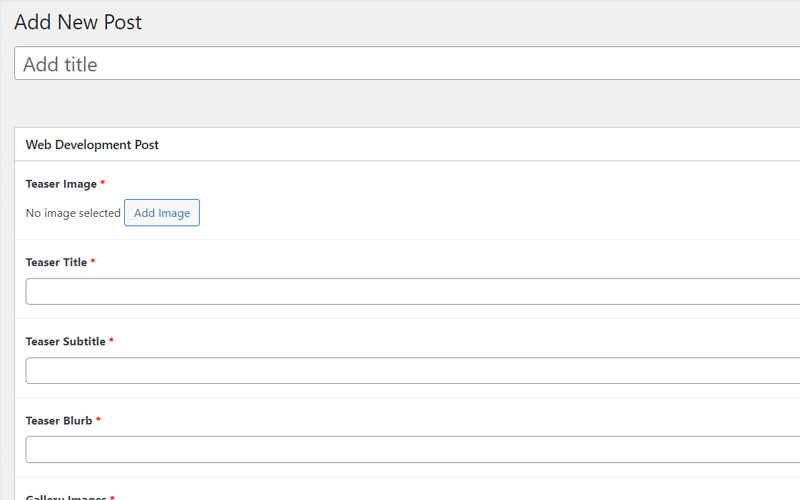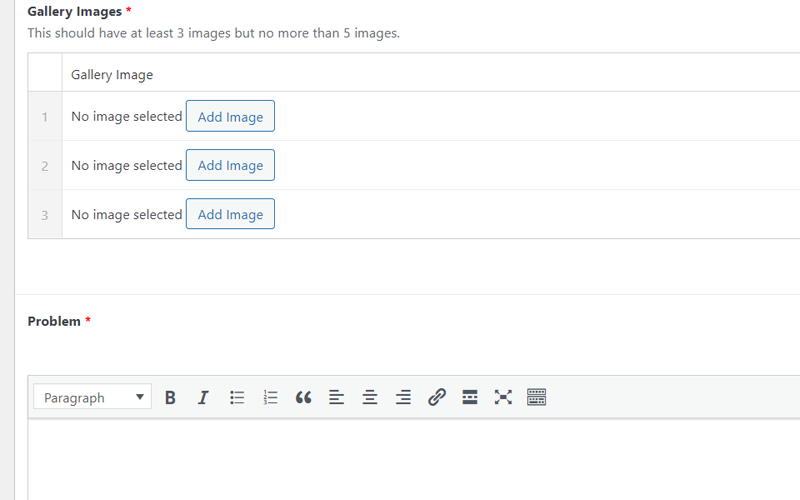3 Key Reasons behind the swap to WordPress
No beating around the bush if you will. Here is the list:
- Easier to Maintain.
- Search Engine Optimization (SEO).
- Options.
If you’d like to learn the details behind those three reasons then keep reading.
1. Easier to Maintain
I know this might be an odd reason, considering I am a web developer. That doesn’t change the appeal behind “easier to maintain.”
In short, WordPress simplifies the creating/updating process. Keep in mind this assumes the code behind your theme supports it.
Now in my case, I swapped from an HTML/CSS/JS driven website to WordPress with a custom built theme. Let’s say, I want to add another Case Study to my Web Development Portfolio. I would copy the file of an existing Case Study, then open it up and replace the old content with new content.

You might be thinking “well that isn’t so hard” but wait there’s more! Unfortunately, HTML files do not slice, dice, or mince. Although if you printed out the code of an HTML file I guess you could give paper cuts.
Moving on, we find where the images for the slideshow are in the code and replace the code so it points to the new images. Wait! Don’t forget you have to put those images in the correct folder or the code will point to broken images.

Cool Images are out of the way, let’s move on to replacing the text or copy of the page. Make sure to only change the unique text elements. This is important as some text elements are meant to be consistent across all the Case Studies.

Don’t forget we need to add a portfolio card for the new portfolio. As you can see there is a lot that goes into adding or updating the content of a website. For a lot of people, this can be overwhelming or tedious, either way, isn’t very appealing.
So how is WordPress easier?
First, let’s make an assumption. The theme you’re using was built to support updating your custom-designed website. I built the theme I’m using so we don’t have to worry about making an ass out of ourselves by making this assumption.
I wanted to be able to easily add portfolio items to their respective types or categories if you will. To do this I created two custom post types:

Real quick, I want to mention I almost always use Advanced Custom Fields Pro Plugin when making a theme. The ability to customize the editing side to match the custom design is invaluable.
Once you’ve clicked “Add New” you’ll see various fields that I set up. These fields allow the end-user to create and make updates without ever having to look at the code.

Here you can see that I added a section for the portfolio card that will go on the category page. In one place you can add the image and all the copy that would show up on the new card. Now as we continue down the page we get to the gallery image section. Again no code, we just add the images we want to have in the slideshow. You can also see there is a WYSIWYG editor to be able to write out the “problem”.
For my portfolios, I chose to approach each piece with the PAR technique. PAR stands for Problem, Action, and Resolution, hence the titles.

The last part is the lists for Action and Resolution.

You can create as many portfolio items through the WordPress editor. Remember to be picky when it comes to portfolio items so don’t go too crazy. All that said, I’m sure you can see how WordPress and a custom theme can make website maintenance EASIER.
2. Seach Engine Optimization (SEO)
At this moment I will say that when it comes to SEO making Google happy comes first. Maybe someday that will change but for now, Google is a huge factor in SEO. If you’ve spent some time in the world of SEO you’ll likely have heard of Matt Cutts. He worked for Google on various search-related projects.
“WordPress automatically solves a ton of SEO issues”.
– Matt Cutts at WordCamp 2009
Out of the box from a code perspective, WordPress does a lot of the “best practices” when developing for SEO. Beyond that, there are many plugins that can go even further to help you with SEO.
Now beyond that, I wanted the ability to easily write blog posts. WordPress gives you that ability, you can focus on writing. To elaborate on the connection, blogging helps me address important SEO ranking factors.
3. Options
Even if you don’t go with a custom-built theme there are a lot of themes to choose from. Beyond themes, there are a lot of plugins to choose from, all to help you get things done.
Now don’t go too crazy when it comes to plugins and themes. Be selective and make sure that the plugins you have picked don’t conflict with each other. One of the trickier aspects is knowing which plugins to avoid.
For me, the option that stood out most is, I only have to worry about maintaining the theme I built.
One last thing…
I will say that while in this case, WordPress was the best choice that isn’t always the case. It is important to know what you want to do with your website. That will affect the value of your options when it comes to building a website.

Share your thoughts!